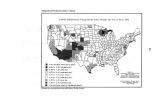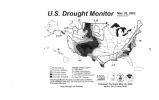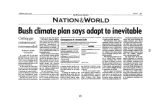| OCR Text |
54 to continue to make a paradigm shift from the crisis management, response- oriented approach of drought management toward the more proactive risk management approach that includes mitigation and preparedness. Addressing this particular challenge is the reason that Senator Domenici of New Mexico and several colleagues in the Senate and Representative Hastings of Florida and several colleagues in the House introduced the National Drought Preparedness Act of 2002. Some of the key provisions of the bill include: 1) creating a national drought policy; 2) improving the coordination and delivery of federal drought programs; 3) creating new tools for drought preparedness planning; and 4) improving drought monitoring and forecasting. The NDMC provided comments to the Western Governors' Association as WGA was assisting Senator Domenici in the development of this bill. Because of the potential interest in this bill by the House Committee on Science, it is important that Committee Members are aware of this bill. One of the concerns of the NDMC is that scientists are a key component of the membership of the proposed National Drought Council and that a national drought policy is based on a clear scientific understanding of the issues and differing regional impacts and needs. • a Drought MiiiQ< iiic< n Career Univsrsiiv of N$ brasK8~ Uncoi> i Drought: A normal feature of U. S. climate. On average, about 18% of the nation experiences drought each year. A sample from other years shows that 85% of the nation experienced drought in 1934; for 1988. 2000. and 2001. the percentages were 36%, 37%, and 20%, respectively. Consecutive drought years are the most difficult from a management perspective because impacts linger and recovery of surface and subsurface water supplies and the environment is delayed. Florida and Georgia experienced 4 consecutive years of drought between 1998 and 2001; West Texas. 6 consecutive years between 1996 ao. 6 2001; anh California and Nevada, 6 consecutive years between 1987 and 1992. 1895 1905 1915 1925 1935 194S 1955 1965 1975 1985 1995 Percent ama of the United States m severe and extreme drought. January 1895- IVlarcli 2002 |


























































































